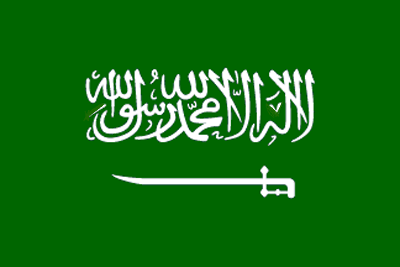Market participants keen to see the country open up more

Ask most people which product defines Saudi Arabia and the word ‘oil’ will be brought up most. In recent years however, another word has started to emerge from the desert kingdom – insurance.
The insurance market in Saudi Arabia started off small, but in recent years has seen some impressive growth. The latest figures from the Saudi Arabian Monetary Agency (SAMA), which is the insurance market regulator in the country, show that in 2013, gross written premiums (GWP) reached SR 25.24bn (£3.95 billion), up from SR 21.17bn in 2012, an increase of 19.2%, compared to a 14.4% growth rate in 2012.
Health insurance GWP, which represents 51% of the insurance market, increased by 14.3% to SR 12.9bn in 2013 compared to SR 11.3bn in 2012. General insurance GWP, which represents 46% of the insurance market, increased by 27.8% to SR 11.5bn in 2013 compared to SR 9bn in 2012.
And according to the latest report on the state of the Saudi Arabian insurance market, which was released in June 2014 by Riyadh-based bank Albilad Capital, the Saudi insurance sector showed double digit growth during the first quarter of 2014. GWP increased by 26%, on the back of growing medical insurance which constitutes 48% of the aggregate gross premium, to reach SR 8.6bn.
“Saudi Arabia is an important market in the Middle East and the Gulf Co-operation Council (GCC),” says Clyde & Co Middle East financial services group partner Peter Hodgins. “It’s actually the second largest market by premium volume in the GCC. The growth rate of premiums is very, very, significant in Saudi Arabia. Double digit growth is creating material opportunities.
“One of the challenges in dealing with the Saudi market is the difficulty in recruiting skilled insurance experts into the country. Retaining good staff is also a challenge. It’s a long-term play – the market is growing rapidly thanks to the demographics. There is a very young population that’s becoming increasingly affluent.”
Hodgins also says that the regulator SAMA was regarded as being well staffed and resourced, and that it was doing a good job in acting to amend old regulations in the wake of recent events, making the regulator a progressive one.
However, the makeup of the Saudi insurance market shows that it is not particularly diverse. In the first quarter of 2014, almost half (48%) of the insurance market share was medical insurance, followed by vehicle insurance, which supplied 29% of market share, according to Albilad Capital. Medical and motor insurance are compulsory purchases in the country.
The remainder of the market was made up by marine (2%), engineering (2%), property (9%) and other forms of insurance (10%).
Some insurers are therefore looking at the Saudi market and encouraging it to open up still further – especially when they look at the area as a whole and what the potential dangers are in terms of natural catastrophes.
Aon Benfield MENA chief executive Ahmed Rajab says his firm decided to invest in the region two years ago.
“When we looked at the region we examined what could be of added value to our clients in the region,” he says. “Exposure to natural catastrophes was one of those things.”
As a result, Aon Benfield is about to introduce an earthquake risk model for Saudi Arabia, the Yemen, Oman and Kuwait. Their United Arab Emirates model is already operational.
“When we started looking at the region we didn’t think that it was vulnerable,” Rajab adds. “But when we looked at history – the risk was there. And as we’re seeing the construction of new cities in Saudi Arabia, we’re seeing the risk get higher and higher.”
According to Aon Benfield the risk of earthquakes in Saudi Arabia itself is not that high. However, the surrounding areas are seismically active and there have been a number of earthquakes in the Red Sea.
“SAMA, the regulator in Saudi Arabia, is well aware of the risk and is looking at this,” Rajab says. “It’s one of the best regulators in the region and is looking carefully at the reinsurance contracts being signed by the market. Saudi Arabia is a very interesting market, where the regulator has been able to make certain classes of insurance compulsory, such as medical and motor insurance. We need to see the regulator step in and make property insurance compulsory now – the populations are not well aware of natural catastrophe risks.”
One final matter must be taken into consideration. Saudi Arabia borders a number of countries, some stable and others currently in chaos. Iraq is one of those latter countries. It will remain to be seen if the chaos in Iraq starts to impact Saudi Arabia. An increase in interest in terrorism insurance might, sadly, make the Saudi insurance market diversify still further.
On October 28 GR will be hosting a Saudi Arabia Executive Briefing in Riyadh. If you operate in Saudi Arabia or have business interestes in the country, click hereto attend.





No comments yet